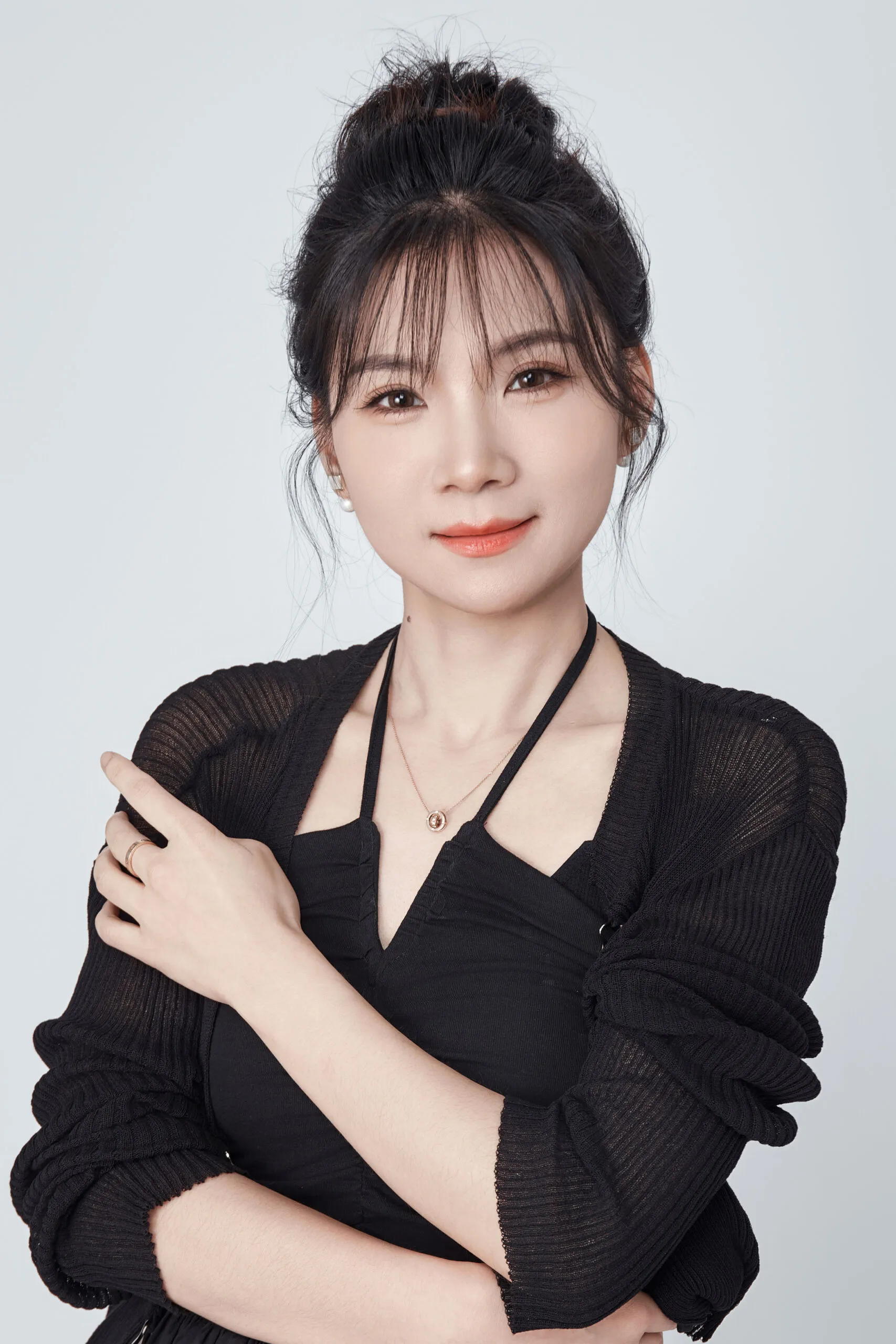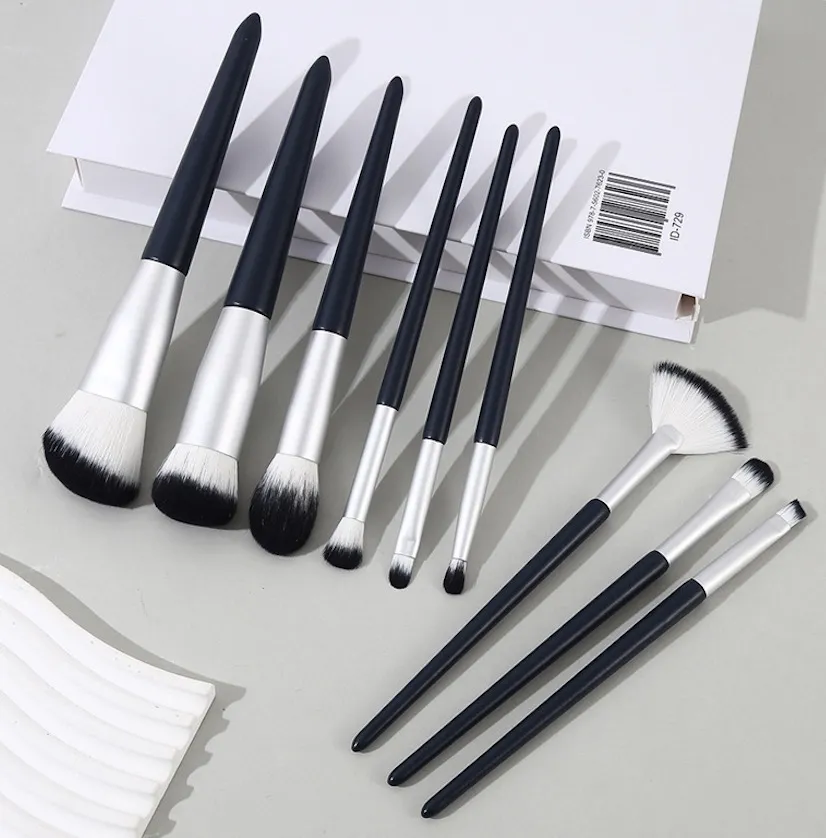Choosing the right brush bristle feels overwhelming. The wrong choice can waste product, ruin application, and misalign with your brand values, costing you money and customer trust.
Natural brushes1 are best for powders due to cuticle-enhanced pickup and soft blending. Synthetic brushes are best for liquids/creams because smooth fibers minimize absorption and deliver precise, streak-free application. Use natural for powder finishes and synthetic for creams/liquids to optimize performance.
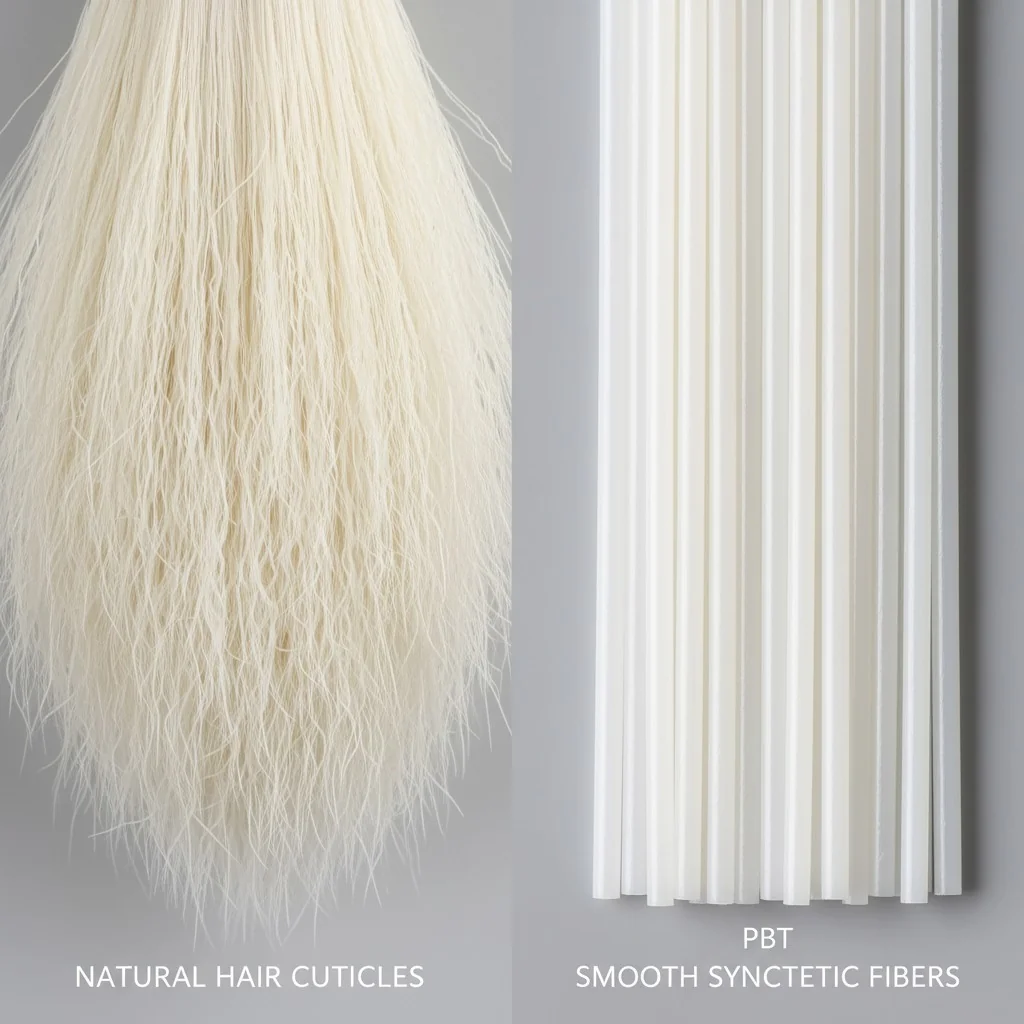
As a brand founder, every detail matters. The bristles in your makeup brushes are not just a component; they are the core of the tool’s Performance2 and a reflection of your brand’s commitment to quality and ethics. I’ve spent years on the factory floor, watching how these tiny fibers can make or break a product line. The debate between natural and synthetic isn’t about which one is "better" overall, but which is right for a specific application, a specific formula, and a specific brand promise. Let’s break down what you, as a strategic decision-maker, need to know to build the perfect brush collection for your customers.
Synthetic brushes are a recent invention from the last decade.False
The first synthetic brush bristles, often made of nylon, were developed in the 1930s, though modern high-performance synthetics like Taklon and PBT are more recent innovations.
The performance of a brush depends on matching the bristle type to the makeup formula.True
Natural hair's cuticles grip powders for diffused blending, while synthetic's smooth surface excels with liquids and creams by minimizing product absorption.
Formula-First: Which Bristle Type Performs Best with Powders vs. Liquids?
Your foundation looks streaky, or your powder eyeshadow applies in patches. This isn’t just frustrating for the end-user; it’s a performance issue that reflects on your brand’s quality.
The solution is simple: match the bristle to the formula. Natural hair has microscopic cuticles that grab and diffuse powders for a soft, seamless finish. Synthetics have smooth fibers that don’t absorb liquids, ensuring efficient, streak-free application and sharp lines.
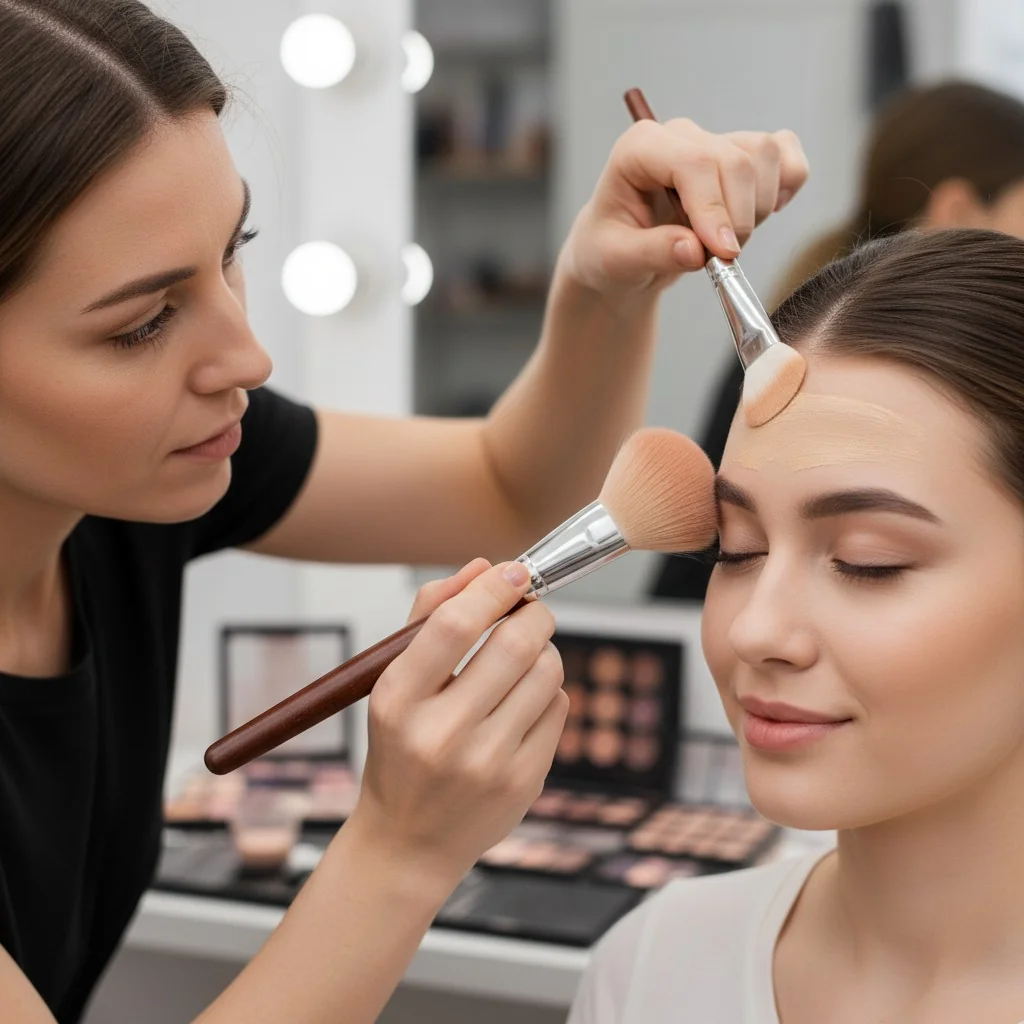
When I’m working with brands to develop a new brush line, the first question is always about the formula. It’s the foundation of every design choice. Natural hair, like goat or squirrel, has a textured surface because of its cuticles. Think of it like shingles on a roof. These tiny scales create friction, allowing the brush to pick up a significant amount of powder and then release it gradually for that beautiful, airbrushed blend that makeup artists love. This is why they remain the gold standard for finishing powders and blushes.
On the other hand, synthetic fibers—typically made from PBT or Taklon—are perfectly smooth. They have no cuticles, which means they don’t absorb moisture or oils from liquid and cream products. This results in less product waste (up to 15-20% less, in our factory tests) and a more precise, streak-free application. This makes them the undisputed champion for foundation, concealer, and cream-based products. For your brand, a mixed kit is often the optimal strategy: natural hair for powder brushes and high-performance synthetics for complexion and detail tools.
All synthetic brushes feel stiff and plastic-y.False
Modern synthetic fibers are engineered with advanced technologies like tapered tips and micro-waviness to mimic the softness and blending capabilities of natural hair.
Natural hair brushes absorb a small amount of liquid product into their cuticles.True
The porous nature of natural hair cuticles causes them to absorb some of the liquid or cream, which can lead to slightly more product usage compared to non-porous synthetic fibers.
Hygiene and Longevity: What Lasts Longer in Real Use?
You’ve invested in premium brushes, but they start shedding or losing shape after a few washes. This damages your brand’s reputation for quality and leads to customer complaints and returns.
Focus on Durability3 from the start. Synthetic fibers are non-porous, resist harsh cleansers, and dry quickly, making them more hygienic and durable. Natural hair requires gentler care to preserve its delicate tips and prevent shedding, but can last for years if maintained properly.
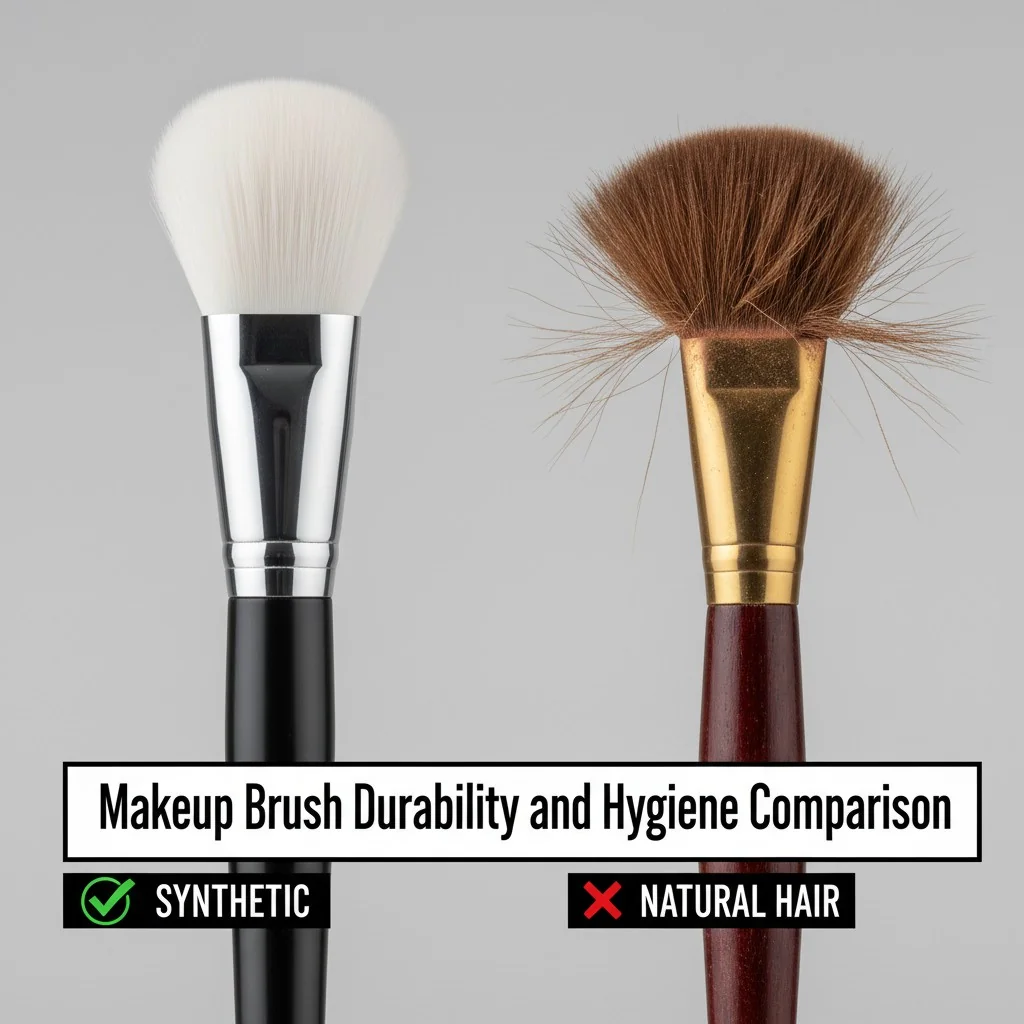
A brush’s lifespan is a critical factor for both customer satisfaction and your brand’s perceived value. In our quality control tests, we simulate real-world use by subjecting brushes to hundreds of washing and drying cycles. Synthetic brushes4 consistently outperform in this area. Their fibers are more resilient to the alcohols and detergents in many brush cleaners. They don’t absorb pigments and oils, so they clean more easily and harbor less bacteria.
Natural hair is more like human hair. It needs to be washed with mild soap and occasionally conditioned to keep the bristles from becoming brittle and breaking. Over-washing or using harsh chemicals can strip the natural cuticles, ruining their blending ability. When specifying brushes for your line, you should ask your manufacturer about shedding rates (e.g., less than 1% loss per 100 wash cycles), bristle tensile strength, and ferrule integrity. A seamless, double-crimped brass ferrule is far more resistant to water damage and corrosion than a glued aluminum one, ensuring the brush head remains secure for years.
You should clean natural and synthetic brushes with the same strong cleanser.False
Harsh cleansers can damage the delicate cuticles of natural hair. Use a gentle soap for natural brushes and reserve stronger cleansers for resilient synthetic brushes.
Synthetic brushes tend to dry faster than natural hair brushes.True
Because synthetic fibers are non-porous, they do not absorb water, which allows them to dry much more quickly and reduces the chance of bacteria growth.
Ethics and Sourcing: How Do You Navigate Vegan Demand and Supply Chain Transparency?
Your customers are demanding vegan and cruelty-free products, but you’re struggling to get clear documentation from suppliers. This ambiguity puts your brand’s ethical claims at risk and can lead to a loss of trust.
Prioritize partners who provide transparent sourcing and certifications. The rising demand for Vegan cosmetics5 directly supports the growth of synthetic brushes. A reliable manufacturer should provide full traceability, from the fiber origin to animal welfare statements for natural hair.
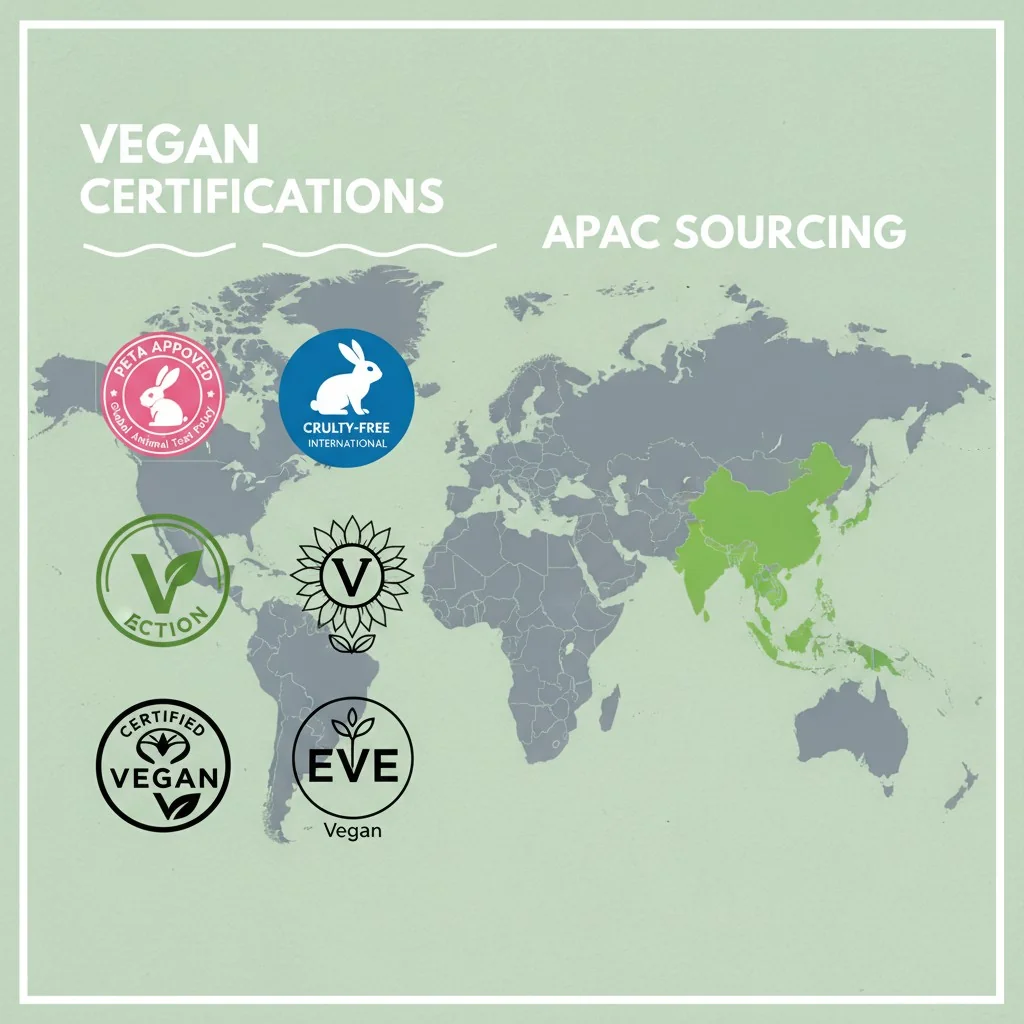
The global beauty market is shifting. The vegan cosmetics market is projected to grow steadily, driven by consumers who want their values reflected in their purchases. This trend is a major force behind the rapid growth of the synthetic brush segment. As a brand founder, making a "cruelty-free" or "vegan" claim is a serious commitment. You need the paperwork to back it up.
With the Asia-Pacific (APAC) region dominating makeup brush production, accounting for over a third of the global market, your sourcing strategy is key. When I work with clients like Emily, I stress the importance of asking for documentation upfront. For synthetic brushes, this means a material declaration confirming the fiber type (e.g., PBT, Taklon). For natural hair, you must request Animal welfare6 statements and proof of origin. Reputable suppliers should be able to provide certifications from organizations like PETA or Leaping Bunny for their cruelty-free lines. Don’t just take a supplier’s word for it; due diligence here protects your brand’s integrity.
All natural hair for brushes is a byproduct of the fur industry.False
Much of the hair, like goat, is often collected by shearing the animals, which does not require harming them. However, brands must verify the sourcing and collection methods to ensure they are humane.
The demand for vegan cosmetics is a key driver for innovation in synthetic brush fibers.True
As consumers increasingly seek ethical and cruelty-free products, manufacturers are investing in developing high-performance synthetic fibers that mimic the qualities of natural hair.
OEM Buyer Matrix: How Do You Balance Cost, Quality, and Total Ownership?
You’re trying to source brushes, but comparing quotes is confusing. Focusing only on unit price can lead to poor quality, high replacement rates, and a higher total cost in the long run.
Adopt a Total Cost of Ownership7 (TCO) mindset. Synthetic fibers often offer a lower unit cost, faster sampling, and greater durability, reducing long-term expenses. Natural hair commands a premium for its unique performance, justifying its cost for specific, high-end powder brushes.
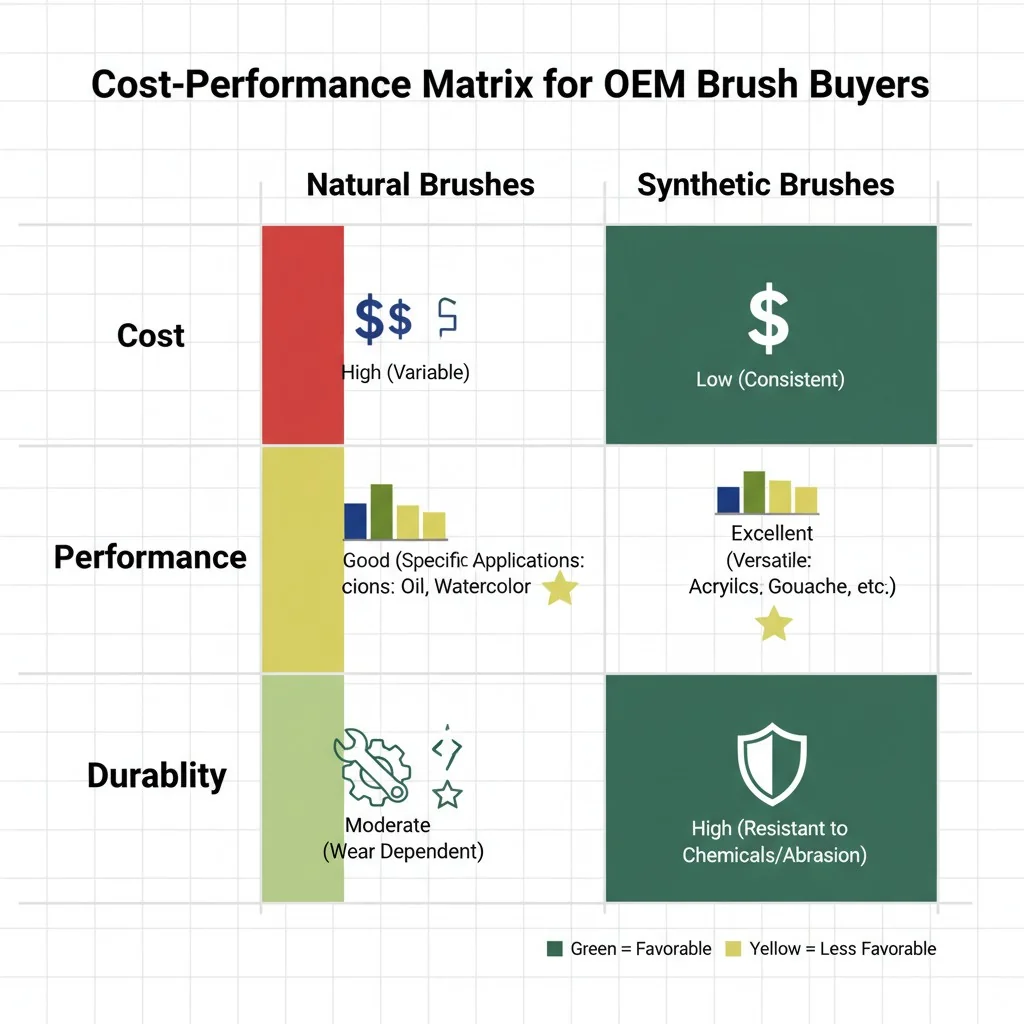
As an OEM buyer, your goal is to find the sweet spot between cost and performance. I always advise my clients to look beyond the per-unit price. For example, synthetic fibers are machine-made, leading to greater consistency and faster sampling iterations. This speeds up your product development timeline. Their durability and resistance to product absorption also mean a lower TCO, especially for foundation and concealer brushes that are used and washed frequently.
Natural hair is an artisanal product. The cost varies widely based on the animal, the grade of the hair (e.g., saikoho goat hair is more expensive than regular goat hair), and the hand-crafting involved. While the initial cost is higher, its unparalleled performance with powders can justify the investment for luxury finishing or eyeshadow brushes where the blend is everything. To control costs without sacrificing quality, focus on the construction: always specify seamless, nickel-plated brass ferrules and high-solids epoxy. These details prevent shedding and extend the brush’s life, protecting your investment and your brand’s reputation.
Global Makeup Brush Market at a Glance
| Metric | Value/Rate | Source/Notes |
|---|---|---|
| Global Market Size (2023) | ~USD 1.5 Billion | Precedence Research, 2023 |
| Projected Market Size (2032) | ~USD 2.6 Billion | Precedence Research, 2023 |
| Market CAGR (2023-2032) | ~6.1% | Precedence Research, 2023 |
| Synthetic Bristle Segment CAGR | ~6.0% | Grand View Research, 2022 |
| APAC Market Share (2023) | ~36.6% | Precedence Research, 2023 |
| Vegan Cosmetics Market CAGR | ~6.3% (to 2030) | Grand View Research, 2022 |
People Also Ask (FAQ)
- Are natural brushes better than synthetic?
Neither is "better" overall; natural excels with powders for soft diffusion, while synthetic is superior with liquids/creams for efficient, streak-free application. - Do synthetic brushes work with powder?
Yes, modern high-performance synthetics are designed to mimic natural hair and can blend powders effectively, though many artists still prefer natural for ultra-fine powders. - Which brushes are more hygienic and easier to clean?
Synthetic brushes are more hygienic as they are non-porous, absorb less product, tolerate stronger cleansers, and dry faster, reducing residue and bacteria buildup. - Are natural hair brushes cruelty-free?
Not inherently. To be cruelty-free, brands must provide strict traceability and animal welfare documentation from their suppliers to ensure humane sourcing. - Why do pros still use natural hair brushes?
Professionals often prefer natural hair for its unique cuticle structure, which provides unmatched powder pickup and seamless, diffused blending for a flawless finish. - Do synthetic brushes shed less?
Typically, yes. Synthetic fibers are more uniform and can be bonded more securely into the ferrule, though overall shedding also depends heavily on ferrule quality and assembly.
Conclusion
Choosing between natural and synthetic brushes depends entirely on your brand’s needs. Match the bristle to the formula, align with your ethical stance, and invest in quality construction.
References
-
Explore the advantages of natural brushes for powder application and their unique blending capabilities. ↩
-
Investigate how different materials affect the performance of makeup brushes for various applications. ↩
-
Discover how different materials impact the lifespan and performance of makeup brushes. ↩
-
Learn how synthetic brushes excel with liquids and creams, offering precise application and less product waste. ↩
-
Explore the growing demand for vegan products and how it influences brush manufacturing and sourcing. ↩
-
Understand the importance of ethical sourcing and animal welfare in the beauty industry. ↩
-
Learn how TCO can help you make informed decisions when sourcing brushes for your brand. ↩

